Are you a first-time parent worried about some illnesses in children as they grow? You are on the right page because we at Rawprofiles.com have the precise information you are looking for. We will kick off with:
1. CHICKENPOX
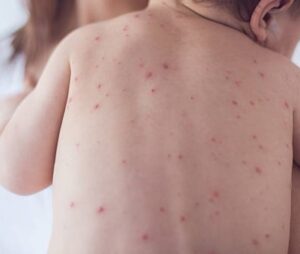
This is a disease that is contagious and mainly affects children. Mostly adults are also infected, but the rate in them is not as high as in children. Chickenpox easily spreads through human transmission, and it is an airborne disease.
The disease is spread through sneezes and coughs by a person who is infected. In this era that we are in century, chicken pox has a vaccine that protects one from getting infected. As a toddler or young child, the vaccine is administered during one of the routine clinic checkups and immunization schedules.
Parents should have their children vaccinated against chicken pox as per the immunization schedule because if not administered and then the child becomes an adult and they happen to be infected, then the person could become seriously sick.
Symptoms of Chicken Pox
- Red Spots on the face and body
- Fever
If scratched, the chicken pox rash mostly leaves scars on the affected areas. The rash is visible over a few days and gradually turns into blisters.
Signs and Symptoms in Adults and Adolescents
- Headache
- Aching muscles
- Nausea
- Loss of appetite
Measures To take when children are infected with chicken pox
- Make sure the child gets enough rest.
- Disinfect all toys and other objects that the child comes into contact with.
- The child should be taken to the doctor immediately the signs appear for proper medical diagnosis.
- The parent or guardian of the child should make the administration of the school where the child attends school aware of the child’s illness to prevent the infected child from spreading the illness.
- The children should be given plenty of water and fluids to keep them hydrated.
Treatment of Chicken Pox
- When infected, it is recommended that children stay at home so that they don’t infect others.
- The infected persons should have their fingernails cut short
- To minimize the risk of secondary infection, it is advised to wear gloves to prevent scratching.
Medication for Children
- On the onset of the rash, acyclovir by mouth is administered within 24 hours. The treatment decreases the symptoms as days go by.
- Taking aspirin is not recommended for children who are less than 16 years of age, as it has been associated with Reye syndrome.
Medication for adults
In adults, the infection is more severe than in children. In adult scenarios, chickenpox can be treated with antiviral drugs like acyclovir. or valacyclovir. This is usually advised within 24–48 hours from the onset of the rash. Adults are often prescribed antiviral medication to reduce the severity of the condition and the possibility of a person getting complications.
2. COMMON COLD
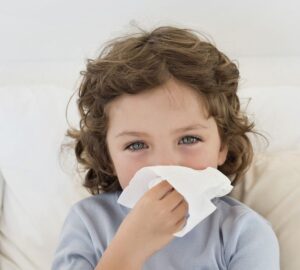
Children get a common cold from a sick person when they have contact with them or through airborne droplets from an infected person. Most common causes of common cold among infants and toddlers are rhinoviruses.
Symptoms of Common Cold
- Running nose
- Sneezing
- Coughing
- watery eyes
- Sore throat
Measures to take
- Keep the child away from congested places at all costs.
- Take the child to seek medical attention.
- Keeping the child hydrated by giving a lot of fluids like low-sugar juices and water.
- Make sure the child covers their mouth when sneezing.
- Encourage goggling for children older than 6 years old.
Treatment
- Apply saline drops, and after a short time, use a suction bulb to draw mucus from each nose. In the case of children, one can use saline nasal spray.
- Administer acetaminophen or ibuprofen according to the instructions on the package, depending on the Childs weight and age.
- Ensure the child drinks a lot of fluids.
- Make sure the child gets enough rest at home so that their immune system fights the virus.
- If given, especially at bedtime, honey has been shown to help ease the children’s cough.
Prevention
- Any one who has a cold should not come close to a child.
- Children can be discouraged from touching their faces because they can get sick if they touch something infested with germs.
- Encourage children to wash their hands thoroughly.
- The child should avoid sharing drinking glasses, eating utensils, and towels with someone who has a with a cold.
- Children should not inhale cigarette smoke, as this worsens the cough.
3. BRONCHITIS AND BRONCHIOLITIS
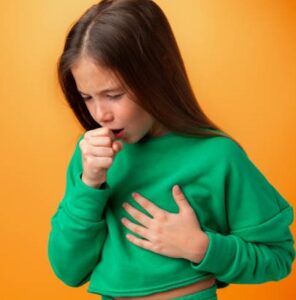
These are two conditions with indistinguishable symptoms that also sound alike. The cause of this condition is a virus that attacks the airways in the lungs. Bronchiolitis affects younger children and targets the smaller airways, while it targets the bronchi and affects older children and adults.
Symptoms and Causes
Bronchiolitis’ early signs and symptoms are similar to those of the common cold. Bronchiolitis can cause the following symptoms and target the child’s airways:
1. Cough
2. Fatigue
3. Irritability, especially in infants
4. A running nose
5. Fever
6, Wheezing
7. Rapid or shallow breathing
8. Grunting noise while breathing
Precautions to take if a child has difficulty breathing or notices the following symptoms:
1. If the child has trouble breathing, call or visit the nearest hospital for medical attention
2. If the child’s skin tone on their toes, fingers, or lips is blue or grey.
3. The child is crying without producing any tears, has a dry mouth, or is not urinating.
4. If the child has flaring nostrils
5. The child is unable to suckle
6. The child’s chest looks like it’s being pulled inward while the skin pulls tightly against the rib cage.
Cause of Bronchiolitis
1. Influenza Virus
2. Parainfluenza
3. Respiratory Syncytial Virus
4. Adenovirus
5. Metapneumovirus
Complications Accompanied By Bronchiolitis
1, Asthma
2. Respiratory failure
3. Pneumonia
Treatment and Management
1. Bronchiolitis Pivot on symptom relief that includes:
a) Antiviral medications, for example, oseltamivir for the flu.
b) fever reducer (antipyretic).
The child may need to stay in the hospital if they have difficulty breathing.
Home Remedy for Bronchiolitis
1. The child should be given plenty of fluids to avoid dehydration. Children under a year old should be given breast milk or formula.
2. Ensuring the child gets plenty of rest
3. Use saline nose drops and nasal drops suction to leave a stuffy nose
4. The child should be fed small meals multiple times if they don’t have an appetite for a full meal during regular meal times throughout the day.
5. Administer a fever reducer to the child, like acetaminophen, as directed by a healthcare provider.
4. CONSTIPATION
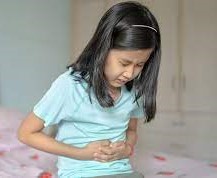
Constipation is usually caused by the bowel movement becoming less and this causes the stool to become difficult to pass. This is a result of changes in the diet or lack of enough fiber intake. When a child has less than three bowel movements in a week, it is termed constipation. On the other hand, bowel movements vary from one person to another, the longer you stay before passing stool, the harder it becomes to pass.
Characteristics of constipation include:
1. When one has a feeling that he or she has not emptied the bowels fully.
2. The stool is dry and hard.
3. The bowel movements and stool became difficult to pass.
When the colon absorbs too much water from the stool, constipation occurs. It dries the stool, and that is what causes constipation making it hard to push it out of the body.
Some of the symptoms of constipation are:
1. The child has difficulty and pain in passing stool.
2. Stomachache or cramps.
3. The child’s stomach will cause bloating or at times nausea.
4. When there are less than three bowel movements in a week.
5. The feeling of one`s bowels not being empty after movement.
The following tips are Treatment and management of constipation
1. The child’s daily diet should include vegetables, fruits, and whole grains. They should eat less food that is high in fat like cheese, meat, eggs
2. Eat fruits rich in fiber, such as pineapples, avocados, oranges, papaya, and berries.
3. Make sure to adopt an Exercise schedule for the child.
4. Take a mild over-the-counter stool softener or laxative if needed.
5. Uses the bathroom as the urge emerges, and avoids holding it.
6. It is important to take note of food that gives the child constipation and make sure they don’t eat it.
7. The child should be given a lot of water to drink and avoid drinks containing caffeine to avoid dehydration.
5. FEBRILE SEIZURES
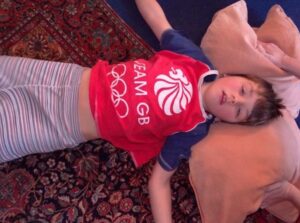
Febrile seizures are convulsions that occur in children. Febrile stands for “feverish.” The seizures can run for a few minutes and end on their own. Most febrile seizures don’t cause health issues and stop without any form of treatment. When a child has this kind of seizure, they become unconscious, fall suddenly, have jerking arms and legs, and their body turn stiff.
Measures to take when a child has an Attack
1. Let the child sleep if he wants to sleep after the seizures are over.
2. Seek medical help immediately if this is the first time of the seizure
3. Nothing should be forced into the child’s mouth
4. The child should not be strained; rather, they should be left on the ground and let the seizure cease.
children are more vulnerable to febrile seizures if:
1. When they were younger than 15 months, they had their first febrile seizure.
2. Febrile seizures runs in the family history.
3. The child has already had one. By the time the child gets to 5 years old, most of them have outgrown having seizures.
Febrile seizures are categorized into two types:
1. Complex febrile seizures: This type of seizure lasts more than 15 minutes and happens more than once in 24 hours. It is characterized by twitching of only one part or one side of the body or movement.
2. Simple febrile seizures: This type is the most common. The seizures in this case last a few minutes and in rare cases, they can last up to 15 minutes, At the time of this seizure, a child may
1. Roll the eyes
2. Moan
3. Convulse, shake, and switch all over
4. Vomit or urinate during convulsions
5. Become unconscious
It is not established as to why febrile seizures occur. Evidence suggests that the seizures are a result of some viruses and that children’s brains respond to the high fevers they might have.
Measures to keep in place when a child has a Febrile seizure
1. Remove nearby objects
2. Any clothing around their neck should be loosened
3. Place the child gently on the floor
4. Keep a record of how long the seizure lasts
5. Keep note of any breathing problems, like a bluish color on the face.
6. To prevent choking, place the child on their side.
NB: If the child turns blue and the seizure lasts more than five minutes, seek medical intervention immediately.
During the seizures, DONT
1. Put the child in cool or lukewarm water
2. Put anything into the Childs mouth
3. Hold or restrain the child
4. Give the child fever-reducing medicine